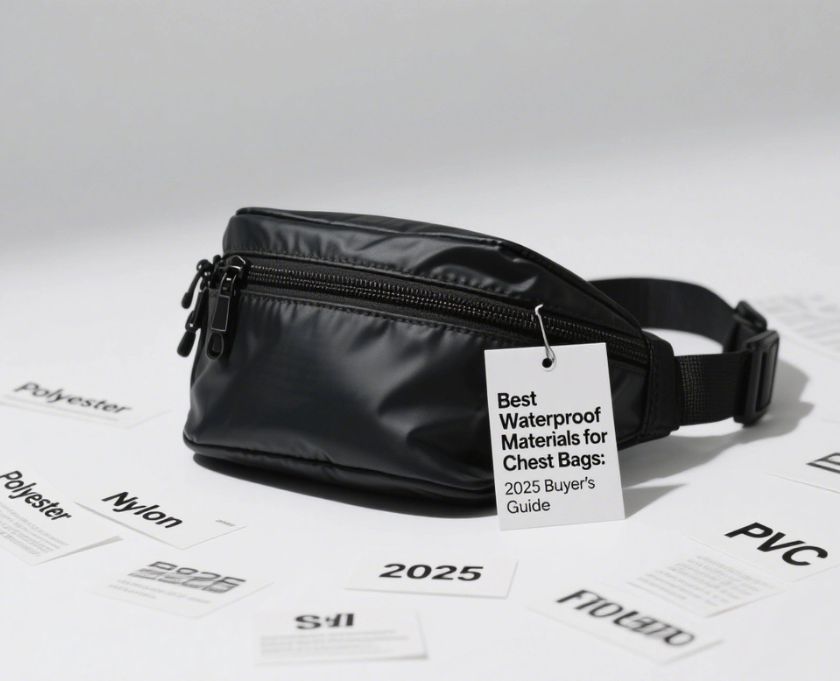Beautiful Plants For Your Interior

Whether you’re commuting through sudden rain, hiking in unpredictable weather, or traveling internationally, the last thing you want is a soaked chest bag ruining your gear. Choosing the right waterproof material isn’t just a style decision—it’s about protection, durability, and long-term peace of mind.
In this guide, we’ll explore the best waterproof materials for chest bags, their pros and cons, and how to choose the one that fits your lifestyle in 2025.
🧠 1. Why Waterproof Material Matters More Than You Think
Rain, spills, sweat—daily life is full of moisture risks. Waterproof materials:
- Protect your tech (phone, earbuds, chargers)
- Extend the lifespan of your chest bag
- Maintain appearance even after harsh conditions
- Reduce odor and mold risk in humid areas
If you live in a city with unpredictable weather or use your chest bag for outdoor sports, waterproofing should be a top priority.
🌧️ 2. Key Terms: Water-Resistant vs. Waterproof
| Term | Meaning | Use Case |
|---|---|---|
| Water-Resistant | Repels water to some degree, not fully waterproof | Light rain, everyday use |
| Water-Repellent | Treated to resist water, but not sealed at seams | Short outdoor exposure |
| Waterproof | Completely impermeable, even in heavy rain | Hiking, travel, downpour use |
🔎 Tip: Always check if the zippers and seams are sealed, not just the fabric.
🎒 3. Top Waterproof Materials Used in Chest Bags
A. TPU-Coated Nylon (Thermoplastic Polyurethane)
Pros: Lightweight, abrasion-resistant, completely waterproof
Cons: Slightly stiff feel
Best for: Travel, urban commuting
B. Cordura® Nylon with DWR Finish
Pros: High strength, durable, water-repellent coating
Cons: Needs re-treatment after heavy use
Best for: Outdoor hikes, EDC use
C. PVC-Coated Polyester
Pros: Inexpensive, highly water-resistant
Cons: Less breathable, heavier
Best for: Budget-friendly urban or motorbike use
D. X-Pac® Fabric (VX Series)
Pros: Ultra-light, laminated, weatherproof and stylish
Cons: Premium price
Best for: High-end tech bags and weather-conscious users
E. Waxed Canvas
Pros: Natural aesthetic, water-resistant, durable over time
Cons: Requires re-waxing, not waterproof under prolonged exposure
Best for: Vintage lovers and casual urban wear
🔍 4. How to Check a Chest Bag’s Waterproof Rating
Many chest bags now list waterproof ratings using IP (Ingress Protection) codes:
| IP Rating | Water Resistance Description |
|---|---|
| IPX4 | Resistant to splashes from any direction |
| IPX6 | Can resist strong jets of water |
| IPX7 | Can survive 30 mins under 1m water |
💡 For chest bags, IPX4–6 is usually sufficient unless you’re in extreme outdoor conditions.
🧪 5. Waterproofing Beyond Fabric: Zippers, Linings & Stitching
Even the best material fails if:
- Zippers aren’t waterproof (e.g., YKK AquaGuard is a good choice)
- Stitching isn’t sealed (taped seams are a must)
- Interior lining absorbs moisture (prefer laminated linings)
Always inspect entire bag construction, not just the label.
🧽 6. Maintenance Tips for Waterproof Bags
- Wipe down after rain to avoid mildew
- Don’t store wet items inside—causes mold and odor
- Reapply DWR sprays every 6–12 months if needed
- Keep away from direct heat sources during drying
📌 Never machine wash waxed canvas or coated nylon—hand cleaning only.
❓ FAQs About Waterproof Chest Bags
Q1. Are all nylon bags waterproof?
No. Only those with special coatings like TPU or DWR can resist heavy water.
Q2. Can I waterproof my existing bag?
Yes, using spray-on DWR products, though not as effective as pre-treated bags.
Q3. Is waterproof fabric breathable?
Not always. X-Pac and Cordura balance both, but PVC doesn’t breathe well.
Q4. What’s the most durable waterproof material?
Cordura with DWR is extremely rugged; TPU is better for full waterproofing.
Q5. Do I need a waterproof chest bag for daily city life?
Yes, if you commute or walk a lot outdoors—it prevents accidental damage to electronics.
Q6. Does waterproofing fade over time?
Yes, especially with daily use. Re-application or replacement may be needed every 1–2 years.